Manual Muscle Testing (MMT)
What is Manual Muscle Testing (MMT)?
Manual Muscle Testing (MMT) is a standardized procedure used by healthcare professionals, most commonly physiotherapists, to assess muscle strength and function.
It includes measuring the muscle’s force production capacity by applying a certain resistance to its range of motion.
Manual muscle testing is used by several medical specialties, such as orthopedics, chiropractic, physical therapy, rehabilitation therapy, and sports training. Different testing techniques are relevant in different sources and aren’t necessarily the same.
The most regularly scheduled contention is that MMT is a method used to assess the muscle’s maximal force production. However, things aren’t always like this. Maximum force can be produced when a muscle has proper innervation, and this is mostly dependent on the size of the muscle. Regardless of the muscle’s size, all medical professionals need to be able to test muscles in order to distinguish between disorders affecting the central nervous system, peripheral nerves, and nerve roots. Usually, these tests are submaximal.
Furthermore, MMT is used by practitioners of applied kinesiology, conventional orthopedic, and neurologic evaluation to determine what is considered to be a quick neurological reflection of different tasks and treatments. Extreme force tests are hardly useful for this purpose. The purpose of this descriptive review is to identify the components of muscle testing and provide an explanation of a kinetic MMT in order to properly elaborate on research involving a kinetic MMT.
One method of assessing muscular strength that is frequently used as part of an objective evaluation of a patient is manual muscle testing. This is an essential component of the physical examination that can provide specifics about any neurologic abnormalities. It is highly helpful in assessing weakness and can help distinguish between imbalance or low muscle endurance and muscular weakness.
There are other synonyms for it, including manual muscle testing, muscular strength grading, and motor testing. There are three methods available for evaluating muscle strength: mechanical, functional, or manual. A combination of morphological and neurological parameters, including musculotendinous stiffness, motor unit recruitment, motor unit synchronization, and neuromuscular function, influence strength.
The manual muscle testing techniques used now are compared to those from the early 1900s. Gravity tests were performed in the early 1900s to assess spinal nerve injury. A medical practitioner can comprehend and convey the results of muscle testing thanks to the new physiological assessment method’s generally acknowledged procedure and grading systems.
When using MMT, the patient is instructed to work against gravity or while the examiners apply manual resistance in the opposite direction to determine the appropriate muscle delivery grade. The patient is then expected to hold the appropriate limb or body part to be examined at a specific level within its range of motion.
Grading strength is a crucial ability that, when performed flawlessly, will provide the rehabilitation therapist with crucial information that will help them create suitable evaluation programs, adjustments, or therapies. MMT is an essential component of a physical therapy examination. When doing MMT, there are established protocols to follow in order to ensure ideal outcomes.
Range of muscle work
Full range of Muscle WorK
The entire range of motion indicates that in order to totally reduce that muscle length, the muscles must function from a fully extended posture. Muscles in this kind of motion contract both concentrically and eccentrically, meaning that when the muscle is stretched, it contracts concentrically, and when it is shortened, it contracts eccentrically.
We can retain the muscles in their full range by employing this technique, which should be mandatory for our daily tasks.
There are three sections to the total range of motion.
- Outer range
- Middle range
- Inner Range
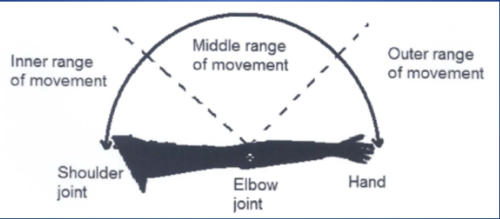
Inner-Muscle Range Exercise
The muscle travels from a mid-contracted to a completely stretched state in the inner range. Moreover, the muscles contract from their least contracted range to their maximum contracted position.
Reaching maximum inner range motion is exceedingly difficult since it requires a larger motor unit.
The Muscle Work medium range
There is no completely extended or fully contracted posture during this kind of muscle activity.
The muscle is contracting to its minimal range and then to its intermediate range.
Throughout our regular tasks, we frequently use our middle muscular range.
When we perform the exercise in this position, our muscle strength, endurance, and tone increase.
Outer Range of Muscle Activity
It’s really challenging to perform the outside range.
Muscles are stretched from their maximal length to their intermediate-range in this kind of range.
The articular surface of the bone is constricted when we perform this muscle activity because the angle of pull is unfavorable.
Additionally, gravity is influencing this action, making it extremely challenging to execute.
Preparation for assessing Manual Muscle Test
It is crucial to have a complete medical history and physical examination from the patient before completing MMT in order to evaluate their general health and find any underlying disorders that might compromise the test’s accuracy.
It is important to let the patient know why they are being tested as well as what to anticipate during the examination. Additionally, they must be told to dress comfortably so that their muscles may be easily accessed and moved in.
The patient should be positioned such that the assessor may readily access the muscles being assessed during the exam. Throughout the examination, the assessor must also make sure the patient is at ease and not tensing their muscles.
To obtain precise results and reduce the danger of damage, it is crucial to do MMT with appropriate technique and steady pressure. Together with any pertinent details regarding the patient’s health or test-taking behavior, the evaluator should also record their results.
In general, appropriate planning and execution are necessary to get precise and trustworthy MMT outcomes.
Protocols for accurately measuring MMT
a crucial action you should do to get more precise results from manual muscle testing:
- Make sure you and the patient are fully informed about every aspect of the test, including the outcomes you hope to achieve.
- Examiners should begin their work on the side that is not damaged or dominant and apply continuous pressure over the whole range.
- A forced result may arise if your patient holds their breath during the test, so make sure they breathe normally.
- To enable the patient to move freely, make sure they are dressed loosely.
- To fully concentrate on the body region being checked, the patient has to be in a posture that provides appropriate support.
- It is imperative for therapists to ensure that patients are constantly assessed in the antigravity position. As long as your muscles are too weak to test contrary gravity, you can view a horizontal plan.
- Resistance should be applied in the exact opposite direction of the muscle being studied’s “line of pull.”
- Prior to moving on to the next position, determine the test points by testing each muscle that has to be evaluated in that position. As a result, less energy is used during the examination, saving treatment time.
- Always provide the required stability to unimportant joints to prevent unnecessary difficulties. Shoulder stabilization, for example, will halt further movement if the patient resists elbow flexion or bending.
- Always evaluate both sides and differentiate between the strength or grade of the muscles in each limb to obtain the best results possible for muscular strength and any injury.
- When it comes to obtaining the most reliable results from manual muscle testing, these guidelines are crucial. Conversely, there are a few items to stay away from that can negatively impact results.
- Avoid these errors while evaluating manual muscle testing (MMT)
- Make sure you are not moving jerkily as you provide resistance to the patient’s movement.
Stop the movement right away if the patient is complaining of pain or pain. Never refuse medical care to a patient.
Types of Manual Muscle Testing (MMT)
This category covers all aspects of manual muscle testing, particularly when performed by a muscle group.
“Resistance” in a manual muscle test always refers to a concentric force delivered in the opposite direction of the muscle or muscles that are contracting at the hands of the therapist.
Break Testing
In manual muscle testing, the therapist assessed the muscles by applying resistance at the conclusion of the motion. This is known as a “break test,” which indicates that the patient should try to avoid breaking the muscle’s range of motion when the therapist applies pressure against the motion.
Active Resistance Testing
This kind of manual muscle testing involves applying pressure across the joint’s predetermined range. The use of this approach by a therapist should be avoided in the absence of appropriate training and experience.
The Oxford Scale for MMT
The Oxford Scale is the most widely used tool for measuring muscular strength.
With this method, the patient’s muscular strength is measured using a 0–5 scale, with the main muscles of the upper and lower limbs being evaluated in opposition to the therapist’s force:
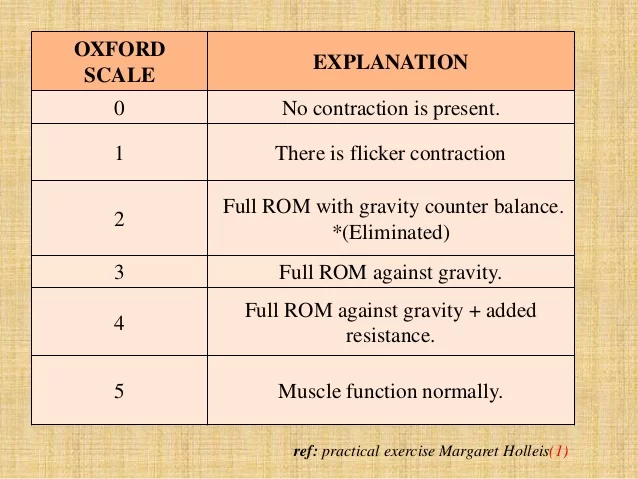
Modified oxford scale
- (0): Absence of contraction
- (1): contraction of flicker
- (2-): traverses a partial ROM with gravity removed
- (2) capable of traveling through the entire range of motion;
- (2+): travels through the entire range of motion while encountering resistance. The person holds posture against gravity with little resistance
- (3+): a complete range of motion against gravity
- (3): partial range of motion against gravity
- (4): the whole range of motion against gravity with a modest resistance
- (5): maximal resistance with the complete range of motion against gravity
Kendal scale
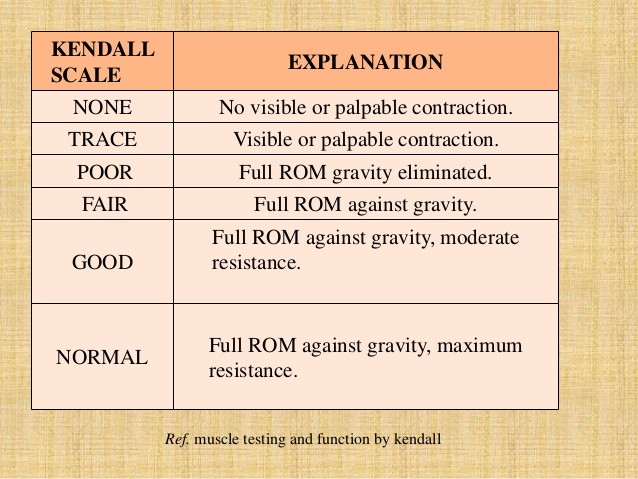
MRC scale
- 0- No visible or experienced contraction
- 1- Visible or Feelable Contracture
- 2- Complete ROM gravity elimination
- 3- Complete resistance to gravity
- 4-Complete Range of Motion Against Gravity, Mild Resistance
- 5- Maximum Resistance, Complete ROM Against Gravity
Shoulder abductors, elbow flexors, elbow extensors, wrist extensors, finger flexors, hand intrinsics, hip flexors, knee extensors, dorsiflexion, great toe extensor, and plantar flexors were the muscles that were often evaluated.
Examiners typically use these muscles to evaluate the vital spinal nerve roots. For example, the therapist tested the strength of the elbow flexors, elbow extensors, wrist extensors, finger flexors, and hand intrinsics from C5 to the T1 nerve root.
A few variables influence the Oxford scale’s outcome. It has to do with subpar performance compliance.
Just as the distinctions between grades 4 and 5 are not significant, neither is the divergence between grades 3 and 4.
The assessment muscle’s weariness causes variations in the outcomes.
Muscle can only be assessed during concentric contraction.
Due to underlying pathologies, some patients examined by physical therapists do not have full range of motion, hence we are unable to apply this scale to all patients in the clinical setting.
For these reasons alone, therapists often employ the modified Oxford Scale.
How to Perform Manual Muscle Testing (MMT)?
Healthcare practitioners utilize this technique to assess a patient’s muscular strength and function. When the patient contracts the muscle, resistance is applied to that particular muscle group. The steps to do a manual muscle test are as follows:
Place the patient in a comfortable posture: The patient should be in a relaxed position, with the muscle group you wish to test in it. To assess the strength of the biceps muscle, for instance, the patient’s arm should be relaxed and stretched.
Describe the process to the patient: Let them know what you’ll be doing and checking for. Inform them that when they are contracting their muscle, you will be providing resistance.
Check for gravitational resistance first: This should be the first thing you do. Asking the patient to move a limb against gravity is part of this. For instance, ask the patient to straighten their leg while they are on their back to gauge the strength of their quadriceps muscle.
Apply resistance: Ask the patient to contract their muscle against your hand by placing your hand on the distal end of the limb, which is the part that is furthest from the body, and applying resistance to the muscle group being examined. To determine if the muscle is powerful enough to overcome it, apply enough resistance.
Grade the strength: To evaluate the tested muscle’s strength, apply a grading system. The grading system goes from 0 to 5, where 5 represents normal strength and 0 denotes no movement.
Repeat the exam: To guarantee correctness, repeat the exam many times. Give the patient a break if they are tired before testing them again.
Record the outcomes: Note the tested muscle group, the strength rating, and any further information on the patient’s capacity to complete the test.
An effective method for assessing a patient’s muscular function and strength is manual muscle testing. Healthcare providers may correctly determine a patient’s strengths and create a treatment plan by following these procedures.
Benefits of Manual Muscle Testing (MMT)
Both individuals and healthcare providers can benefit from manual muscle testing (MMT) in a number of ways. Among these advantages are:
- Accurate diagnosis: MMT enables medical practitioners to identify patients’ muscular imbalances or weaknesses with accuracy. This aids in creating a suitable treatment strategy that deals with the issue’s underlying causes.
- Individualized care: Based on MMT findings, medical practitioners may create a personalized care plan that meets the unique requirements of every patient. This ensures that patients receive individualized treatment based on their particular circumstances.
- Objective assessment: MMT offers a methodical approach to evaluate the function and strength of a patient’s muscles. By doing this, biases resulting from subjective evaluations are reduced.
- Monitoring progress: MMT has the ability to track a patient’s advancement over time. This enables medical practitioners to modify the treatment plan as necessary to guarantee that the patient is moving closer to their objectives.
- Improved results: Medical practitioners may create a treatment plan that targets the underlying problems by precisely evaluating a patient’s muscle strength and function. Patients may have better results and a higher quality of life as a result of this.
The principles of use of MMT
The following are some MMT use guidelines:
Consistency: To provide accurate and trustworthy findings, the examiner should execute MMT regularly. This entails evaluating the same muscles in the same sequence, using the same grading scale, and delivering force in the same way.
Standardization: Although there isn’t a set protocol for MMT, healthcare providers should adhere to established norms and procedures to guarantee precision and uniformity. This entails stabilizing the patient’s body, adopting particular testing postures, and refraining from compensatory movements.
Patient cooperation: To guarantee accurate findings during MMT, patients should be told to unwind and cooperate. They must be made aware of the test’s objectives as well as any hazards or pain that may arise.
Experience as an examiner: To correctly interpret the patient’s answer in MMT, the examiner must possess both expertise and experience. To stay proficient in MMT, healthcare personnel need to undergo continuous practice and training.
Interpretation: The patient’s general health and function should be taken into consideration while interpreting the findings of MMT. When analyzing MMT data, healthcare providers should take into account additional parameters including pain, flexibility, and joint mobility.
Consistency, standardization, patient compliance, examiner expertise, and correct result interpretation are all stressed in the general principles of using MMT. Healthcare providers can get trustworthy and helpful information on a patient’s muscle function and strength by adhering to these guidelines.
Manual Upper Extremity Muscle Testing:
- Shoulder Extension and Flexion
- Abduction of the Shoulders
- Horizontal Adduction of the Shoulders
- Scapular Adduction/Retraction
- Scapular Elevation
- Extending the elbow
- Elbow flexion
- Wrist extension
- Wrist flexion
Lower Extremity Manual Muscle Testing:
- Hip flexion
- Hip extension
- Hip abduction
- Hip adduction
- Hip internal rotation
- Hip external rotation
- Knee extension
- Hip abduction
- Ankle dorsiflexion
- Ankle planter flexion
- Ankle inversion
- Ankle eversion
Clinical Significance
Examining muscular weakness is a crucial aspect of many disorders that may be assessed with the aid of manual muscle testing (MMT). Valid and high-quality assessments require careful inspection and the right methodology.
The Oxford Scale has acceptable interrater reliability, is widely acknowledged across the world, and doesn’t require any special equipment. In the long run, hand-grip dynamometry may be applied to more accurate techniques of measuring since it is less subjective and produces a meaningful measurement.
Manual muscle testing looks at a patient’s ability to carry out everyday tasks and determines whether muscular strength is a barrier.
Supplementing with protein can accelerate improvements in anaerobic and aerobic power as strength training volume, frequency, and duration increase.
Disadvantages of the use of MMT
Although there are several advantages to manual muscle testing (MMT), medical professionals should also be aware of potential drawbacks. Among them are:
Unreliable outcomes: MMT depends on the examiner’s arbitrary evaluation of the patient’s muscular power. Because various examiners may evaluate a patient’s strength differently, this might result in conflicting findings.
Limited scope: MMT evaluates a patient’s muscular function and strength alone. It doesn’t offer details on other facets of their health, such as flexibility or joint mobility.
Lack of standardization: The absence of a set methodology for MMT may cause variations in its use. Because of this, comparing results between several patients or examiners may be challenging.
Risk of injury: MMT requires exerting force on a patient’s muscles, which some patients may find unpleasant or uncomfortable. If excessive force is used, there is also a chance of becoming hurt.
Limited applicability: Not all individuals will benefit from MMT, especially those who have specific illnesses or injuries. Patients experiencing extreme pain or inflammation, for instance, could find it difficult to endure the examination.
In conclusion, even though MMT can be a useful tool for medical practitioners, it’s critical to understand its constraints and any negative effects. MMT should be used in conjunction with other evaluation techniques by medical practitioners to provide a thorough picture of a patient’s function and health.
Precautions for MMT
It’s critical that medical personnel take all reasonable safety and comfort measures when doing MMT on patients. These safety measures might consist of:
Good positioning: To avoid needless movement or harm, the patient should be placed in a secure, comfortable position.
Communication: Throughout the examination, the medical practitioner should have open lines of communication with the patient, outlining the process and giving precise directions.
Gradual resistance: To avoid putting the muscle under undue or abrupt pressure, the resistance should be increased gradually.
Observation: In order to avoid harm, the medical practitioner should watch how the patient reacts to the resistance and make necessary adjustments.
Patient feedback: During the examination, the patient should be invited to share their level of comfort as well as any pain or discomfort they may be feeling.
Use of suitable equipment: To guarantee the patient’s stability and safety throughout the examination, the healthcare provider should make use of appropriate equipment, such as straps or supports.
Healthcare practitioners may guarantee a safe and effective MMT examination for their patients by adopting these essential safety measures.
Limitations of Manual Muscle Testing (MMT)
Even though the MMT grades are still very helpful in clinical practice because of their quicker turnaround times and cheaper cost, there are a number of limitations that must be understood before evaluating patients:
Subjectivity: The subjective assessment and interpretation of the therapist is a major component of MMT. Muscle strength is graded according to the therapist’s subjective assessment of movement or resistance, which can lead to subjectivity and variability in the findings.
Lack of standardization: MMT lacks a generally acknowledged standard. It is possible for various therapists to employ marginally different methods or grading schemes, which might cause discrepancies in the evaluation and make comparing outcomes across practitioners challenging.
Cooperation is required: MMT calls for the active engagement and collaboration of the patient. The validity of the examination may be jeopardized by certain patients’ inability to comprehend or adhere to the instructions, such as those with neurological or cognitive problems.
Restricted evaluation of functional movements: MMT evaluates muscular strength during single motions or contractions. It could not accurately depict the muscle’s capacity for intricate functional motions or coordinated actions involving several muscular groups.
Impact of weakness and pain: A patient’s capacity to produce a maximum muscular contraction during MMT may be impacted by the pain or discomfort they are experiencing. In a similar vein, weariness may affect later test iterations and result in erroneous strength evaluation.
Incapacity to evaluate components necessary: for ideal movement and function, such as muscle coordination, timing, and neuromuscular control, is a result of MMT’s primary focus on muscle strength.
Lack of sensitivity: In individuals with minor weakness or those who are already at a high level of strength, MMT may not be sensitive enough to detect subtle changes in muscular strength.
The first restriction is that each person’s MMT scale is unique, thus the score is determined by the clinician’s assessment.
The MMT scale’s second limitation is its inability to distinguish subtle variations in muscular strength. This is mostly because of the scale’s step-by-step design, which has encouraged the development of alternative scales with a few more diagnostic levels.
Clinically meaningful variations in muscle strength cannot be detected by manual muscle testing.
MMT Grades were originally designed to evaluate corrected strength in individuals undergoing rehabilitation from paralytic diseases and muscular dystrophies. Therefore, the reason why MMT is utilized in a range of therapeutic circumstances is probably due to tradition rather than sound scientific reasons. The subjectivity and purported inaccuracy of MMT have led many doctors (and insurers) to choose more objective, sensitive ways of assessing strength, including portable dynamometer measurements.
Conclusion
Healthcare practitioners utilize a technique called manual muscle testing to assess the body’s muscle strength and function. It entails providing resistance to particular muscle groups while the patient retains a position or executes an action. The test’s results can be used to guide treatment strategies, assess the degree of muscular weakness or dysfunction, and track improvement over time.
FAQs
How does MMT become used?
MMT is used to evaluate the function and strength of different muscles. Strength is measured in a range of 0 to 5. There is a defined testing posture for every muscle to evaluate strength effectively.
What is the MMT scale?
1-2 Modify the criteria for the range of motion to account for muscular contractures. 3. Only muscles assessed in the conventional (against gravity) testing position are eligible for this grade. After a 60-second recovery period, 3–5 MMT grades in this range should be retested for the next highest grade.
Which disadvantages exist with manual muscle testing?
The subjective nature of manual muscle testing gives rise to its limitations. This force may vary throughout tests since the external resistance has to be provided by the tester. Given alternative more dependable techniques, the variability leads to interrater reliability scores that are unacceptable.
What benefits might manual muscle testing offer?
MMT may assist in locating and isolating the damaged muscle. It can also assist in ascertaining whether there is a neurological impairment resulting from aging, trauma, or any other cause.
Why perform manual muscle testing?
The most widely accepted opinion is that MMT is an effort to determine the most force that a muscle can produce. This isn’t always the case, though. The maximal force produced, given proper innervation, is largely dependent on the muscle’s size.
What other name would you give muscle testing?
Applied kinesiology (AK) or manual muscle testing (MMT) are other names for muscle testing. This alternative medical approach makes the claim to be able to accurately diagnose mental, chemical, physical, and structural conditions.
Is MMT a tool for evaluation?
The MMT is used in the fields of physical therapy, homeopathy, chiropractic, orthopedics, neurology, medicine, and dentistry to evaluate locomotor system malfunction and track a patient’s improvement throughout treatment.
How is MMT checked?
Process. The patient is seated straight and positioned to provide complete mobility of the joint against gravity while the examiner stands to the side of the muscle being evaluated. The required movement against gravity is shown by the examiner. The patient is then asked to repeat the move by the examiner.
Which MMT scale is typical?
In a single posture, several muscles can be scored from 0 to 5. The initial testing position for other muscles will show a grade range of three to five. The muscle will need to be tested again in a different.
What is the purpose of the MMT?
Muscle Test by Hand[edit | edit source] A standardized battery of tests known as manual muscle testing (MMT) is frequently employed in clinical practice by physical therapists who treat patients with spinal cord injuries. It measures muscle strength and function in relation to predetermined criteria.
What is manual testing of the muscles?
Manual muscle testing is a technique where a practitioner applies external resistance to a particular muscle or muscle in an attempt to stress the muscle and see if it is strong enough to withstand the demands of daily activities, including sports.
Who initiated the practice of muscle testing?
Physical therapists Kendall, McCreary, and Provance are among the researchers and practitioners who created manual muscle testing (MMT). However, the development of an early dynamometer in the 19th century by Swedish physician Gustav Zander is credited with giving rise to MMT. The dynamometer was a machine used to test muscular strength by exerting different muscle units with resistance.
Muscle testing was later introduced into clinical practice by physical therapist Florence Kendall in the early 1900s, and this finally resulted in the creation of the Kendall technique of MMT. This method assessed muscular strength in several muscle groups using grading systems and established methodologies. Physical therapy was greatly impacted by Kendall’s work, which also established the groundwork for contemporary MMT methods.
Since then, a number of scholars and professionals have made contributions to the advancement of MMT and its uses in therapeutic contexts. MMT is now a widely utilized technique in sports medicine, physical therapy, and other healthcare domains to evaluate muscle function and strength.
Which situations are suitable for manual muscle testing evaluation?
A variety of problems that impact muscle strength and function, such as neurological abnormalities, musculoskeletal traumas, and chronic illnesses, can be assessed by manual muscle testing.
How are manual muscle tests carried out?
Applying resistance to particular muscle groups while the patient moves or maintains a posture is known as manual muscle testing. The degree of resistance the patient can overcome will be used by the medical expert to grade the muscle’s strength.
How frequently should one conduct manual muscle testing?
The patient’s condition and treatment strategy will determine how often manual muscle testing is done. It can be carried out on a regular basis to track development and make necessary therapy adjustments.
How do therapists assess MMT in a patient?
For each muscle test, the patient should sit in a position that allows him to fully extend the range of motion in that joint, and the examiner should stand close to the tested extremity. It should be an antigravity movement. After demonstrating the process, the initial examiner requests that the patient repeat the same motion.
To what extent is MMT accurate?
In clinical contexts, manual muscle testing, or MMT, is a commonly employed technique for evaluating muscular strength. However, a number of variables can cause variations in its accuracy and dependability. Here are some things to think about while evaluating MMT’s accuracy:
Interrater dependability: The dependability of various therapists or assessors may have an impact on MMT’s accuracy. Variations in experience, training, and subjective assessment among practitioners can cause discrepancies in evaluation and outcomes. Enhancing inter-rater reliability can be achieved through training and standardization.
Intra-rater reliability: MMT outcomes might vary, even when administered by the same therapist. The consistency of resistance application, changes in patient posture, and disparities in subjective interpretation are some of the factors that might compromise the validity of repeated measurements taken by the same professional.
Subject cooperation and effort: The patient’s capacity to cooperate and exert their fullest effort throughout the test is critical to the accuracy of MMT. The accuracy of the results might be impacted by variables such as patient understanding, pain, discomfort, and weariness. Individuals who suffer from neurological or cognitive disabilities may find it challenging to consistently put out effort or follow directions.
Limitations in measuring certain muscle functions: MMT measures muscle strength mainly during single contractions or motions. It might not accurately depict the muscle’s capacity for intricate motions or useful tasks requiring the cooperation of several muscular groups. This restriction may have an impact on MMT’s accuracy when evaluating certain functional motions.
References
- Dhameliya, N. (2023e, May 6). Manual Muscle Testing (MMT): Grading, Procedure – Samarpan. Samarpan Physiotherapy Clinic. https://samarpanphysioclinic.com/manual-muscle-testing/
- Patel, D. (2023, December 13). Manual Muscle Testing (MMT) – Grade, Type, Scale, Benefits. Mobile Physiotherapy Clinic. https://mobilephysiotherapyclinic.in/manual-muscle-testing-mmt/

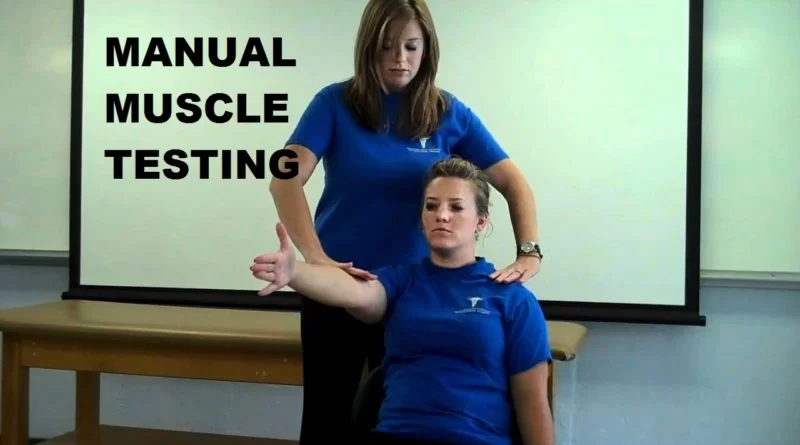
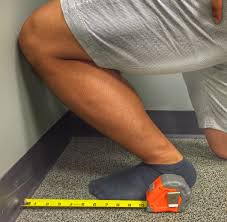
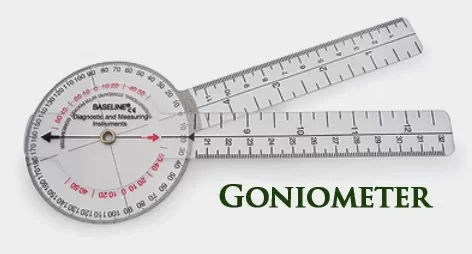
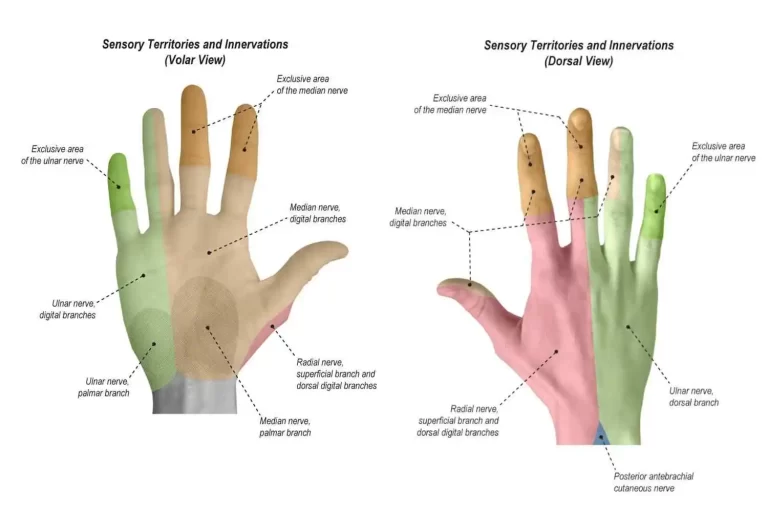
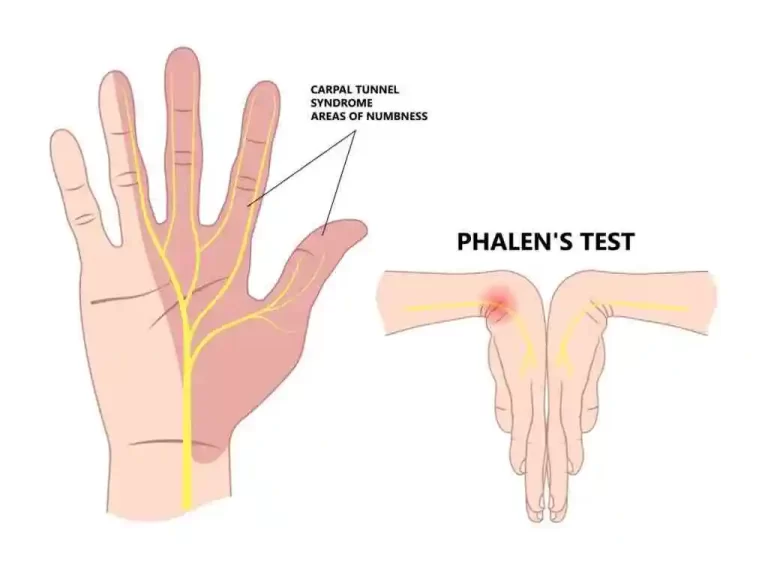
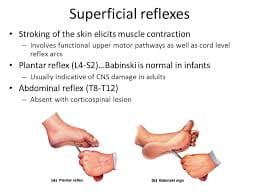

One Comment